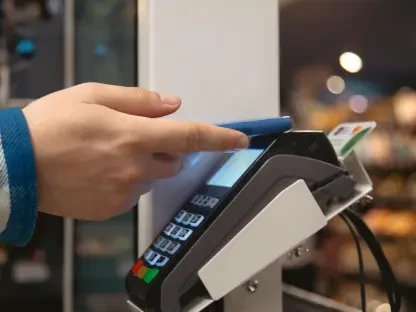The PH E-Commerce Boom Meets Its Operational Limits
Holiday carts fill in minutes, livestream orders spike by the hour, and checkout clicks convert with impressive speed, yet the moment of truth still happens behind warehouse doors where accuracy, timing, and visibility decide who wins repeat business and who eats costly refunds. This is where the Philippines’ fast-growing digital economy runs into old constraints that algorithms alone cannot fix. The market is vibrant, but the system that moves goods from screen to doorstep remains uneven.
E-commerce has become a growth engine for retail and MSMEs, fueled by mobile-first shopping and seamless digital payments that have normalized online purchases across urban and regional markets. Product categories from beauty to home essentials dominate marketplace rankings, while social commerce adds erratic bursts of demand that strain manual processes. Around this surge sits a complex network of marketplaces, 3PLs, fulfillment partners, and payment gateways that collectively shape the buyer experience, for better or worse.
Policy and infrastructure still set the pace. Roads, warehousing supply, and customs efficiency influence delivery speed, while regulations on data, consumer rights, and payment security frame what “good” fulfillment looks like. As platforms tighten service standards and buyers default to real-time tracking, the operational bar keeps rising. Those that meet it gain trust; those that miss it pay for reattempts, cancellations, and churn.
Demand Is Soaring, Expectations Are Rising
Trends Redefining Fulfillment in the Philippines
Peak season acts like a pressure gauge. Flash sales and holiday bundles push volumes past normal capacity, exposing brittle workflows that crack under miscounts, picking delays, and late handoffs to last-mile. Buyers now expect speed and transparency as table stakes, and those expectations do not recede when the season ends. What felt like a surge in the past is now the baseline.
Technology shifts the center of gravity. Automation, multi-storefront inventory sync, and data-driven workflows reduce manual touches and shrink error rates. MSMEs increasingly treat outsourced, configurable fulfillment as a lever for scale, not a stopgap. Trust and payment readiness amplify both the upside of great service and the damage of poor delivery, making consistency a strategic necessity.
Market Momentum and Forward Indicators
Market estimates point to e-commerce reaching about USD 24 billion in 2024, with higher conversion where payment options are proven and seamless. Yet cost-to-serve still bites: fragmented facilities, rising storage and labor costs, and rework from order errors cut into margins. Local speed benchmarks trend faster, while tolerance for missed promise dates narrows.
Forecasts hinge on logistics reliability and MSME enablement. If fulfillment keeps pace, growth compounds through repeat purchases and higher basket sizes; if not, the market expands unevenly and concentrates among the best operators. Peak seasons magnify gaps, but the real story is year-round readiness, where stable operations translate trust into lifetime value.
The Fulfillment Gap: Bottlenecks, Costs, and Capacity
Seasonal spikes reveal the fault lines: oversold SKUs, inaccurate counts, and lagging visibility create preventable cancellations and stockouts. Once the warehouse falls behind, transport buffers vanish, and customer service absorbs the blowback. The result is lost sales, higher support costs, and returns that take too long to process.
System-level constraints compound the problem. Infrastructure fragmentation keeps per-order costs high, while many MSMEs operate with limited headcount, manual records, and siloed tools. Profitability erodes as re-picks, re-ships, and refunds pile up. Practical fixes start with process standardization and automation, then extend to outsourcing core tasks to specialists who can scale workflows without rebuilding a business from scratch.
Rules, Compliance, and the Trust Equation
Regulation directly touches fulfillment: warehousing standards, transport documentation, platform rules, and tax compliance set the ground rules for service design. Consumer protection and data privacy shape how proof of delivery, customer information, and dispute records are handled across systems.
Trust grows when commitments are explicit and verifiable. Clear promise dates, photo proof, and consistent labeling reduce friction; standardized return windows and transparent fees prevent disputes. Marketplaces reinforce this with performance thresholds and penalties, nudging sellers toward more disciplined operations that reward reliability over improvisation.
Smart Fulfillment as the Strategic Pivot
Smart warehousing reframes logistics from a back-office task into a growth platform. Real-time inventory, intelligent allocation, and automated pick-pack form the core, ensuring accuracy under volume. Custom-fit workflows—bundling, barcode tagging, QC checks, and branded packaging—protect brand standards while optimizing throughput.
System-wide visibility becomes the safety net. Dashboards with processing rules, storefront sync to avoid overselling, and order routing that balances cost and speed keep operations aligned with demand. Returns re-enter the system quickly, turning post-peak refunds into restocks and second-chance sales rather than sunk costs. Flexible last-mile options, paired with clean handoffs and item-level tracking, maintain the chain of accountability from shelf to doorstep.
Ninja Van’s Fulfillment offers a concrete blueprint. Its tech-led orchestration integrates storage, picking, packing, and dispatch under one system, minimizing manual errors and compressing cycle times. For MSMEs, this translates into enterprise-grade discipline without heavy capex, plus the confidence that comes from photo proof, status clarity, and predictable handoffs across the delivery network.
What’s Next: From Peak-Season Fix to Year-Round Advantage
Emerging tools shift the frontier again. AI-driven forecasting improves buy plans, slotting optimization cuts travel time on the floor, and scalable automation reduces variance during spikes. Same-day ambitions, social commerce bursts, and live-selling windows challenge even mature setups, demanding tighter coordination between storefronts and warehouses.
Consumers keep choosing reliability, clarity, and control over pure speed when trade-offs are explicit. MSMEs can progress through modular adoption—plug-and-play integrations, pay-as-you-grow pricing, and staged automation—so capabilities expand as demand scales. Macroeconomic shifts and regulatory updates may accelerate adoption or add compliance steps, but the direction of travel favors transparent, tech-enabled operations.
Conclusion and Actionable Playbook
The evidence pointed to a simple truth: demand growth did not translate into durable gains without fulfillment excellence. Sellers that audited their processes, centralized inventory, and automated core flows were set to protect margins when peak pressure hit. Those that outsourced smartly gained speed and accuracy without capital drag, and they used metrics like promise-date accuracy, order cycle time, pick accuracy, and return turnaround to keep improving.
Investment priorities were clear: visibility tools, clean systems integration, and returns optimization formed the backbone of a resilient operation. By treating logistics as strategy, not overhead, businesses converted speed and trust into loyalty and lifetime value. In a market defined by rising expectations, smart fulfillment had emerged as the practical path from seasonal survival to sustained advantage.









